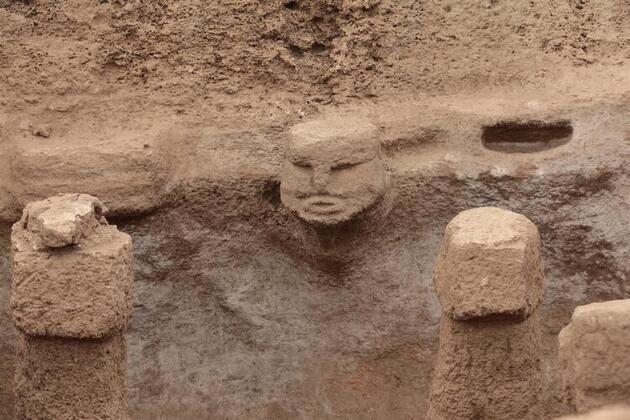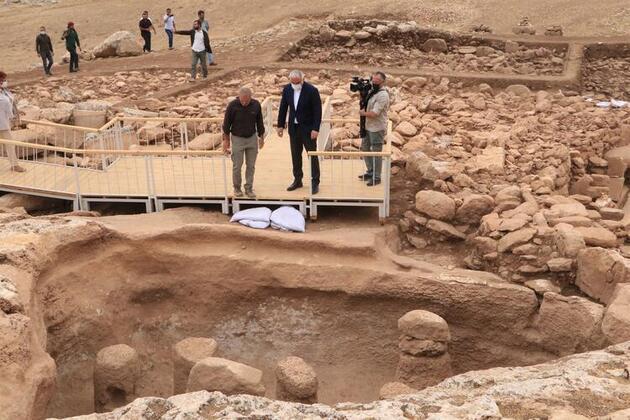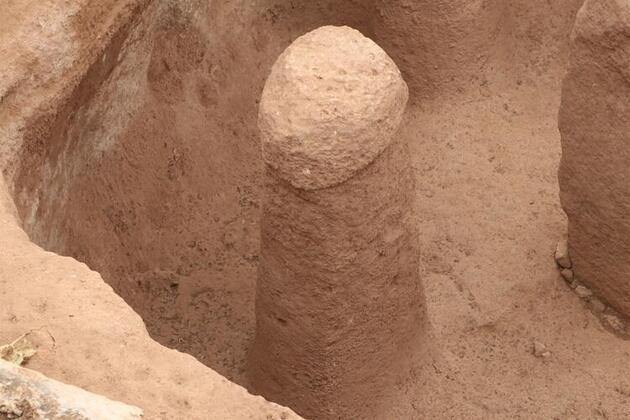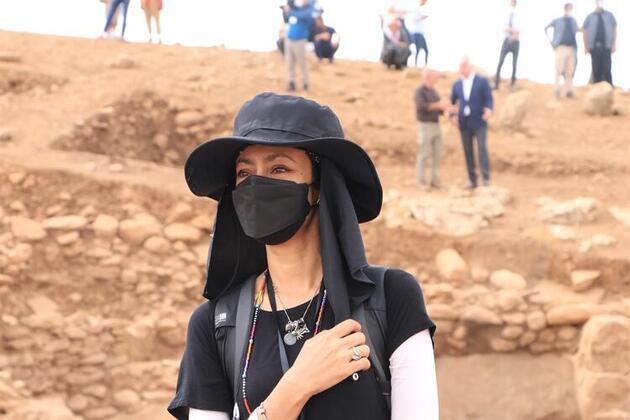by Umut Erdem, Hürriyet Newspaper
25.09.2021
After Göbeklitepe in Şanlıurfa, the greatest discovery of the world of archeology, which sheds light on the history of humanity 12 thousand years ago, 12 more excavations under the name of ‘Stone Hills’ are being carried out in the same region… Tourism Minister Ersoy, who introduced Karahantepe from these excavations yesterday, said, “ Göbeklitepe is not alone. With 12 excavations, we will be interpreting the unknown stories of Anatolia’s contribution to the history of humanity.” (Umut Erdem/Hürriyet)

Polished stone age is one of the historical periods that we all first learned at school. In other words, the Neolithic Age with its scientific name. What is known about this period, known as the end of the Stone Age, to about 10,000 BC, was naturally very limited. Until the discovery of Göbeklitepe in Şanlıurfa.

Archaeological finds unearthed in Göbeklitepe shed light on one of the oldest periods in human history. A great deal of information, from what the people of that period ate and drank to how they worshiped, is no longer a secret. And Göbeklitepe is not alone. Anatolia continues its pioneering work on the enlightenment of the Neolithic Age.

After Göbeklitepe, which is on the UNESCO World Heritage List, 12 more excavations are being carried out in the region under the name of ‘Stone Hills’. These excavations, which have similar obelisks in Göbeklitepe, will host the first examples of settled life and social communities in the world. The new star of Taş Tepeler, which was announced to the world with a launch made the previous day, is Karahantepe .

Archaeological excavations continue in 7 areas , including Göbeklitepe, Karahantepe , Gürcütepe, Sayburç, Çakmaktepe, Sefertepe and Yeni Mahalle Mound, covering an area of 100 square kilometers . In the coming days, as part of the first phase of the project covering the years 2021-2024, excavations will also begin in Ayanlar, Yogunburç, Harbetsuvan, Kurt Tepesi and Taşlıtepe settlements. Göbeklitepe and Karahantepe main station; There will be intermediate stations in areas such as Sefertepe, Taşlıtepe and Ayanlar Höyük. Karahantepe is planned to be opened to visitors in 2022.
It will shed light on 12 thousand years of history

The Stone Hills region contains the first examples of organized labor and specialization in the history of civilizations. It will be revealed that the findings obtained in the excavations to be carried out in 12 places shed light on the knowledge of humanity in a wide area from the daily lives of people in the prehistoric period to the world of belief, and that there are many other places similar to Göbeklitepe, which reflects the first stages of the Neolithic Age in Şanlıurfa.

In Stone Hills, which is thought to be the beginning of the process where the shelter turned into a dwelling and real villages emerged 12 thousand years ago, there are finds on humanity’s first use of pottery and the ability to carry out basic trade initiatives. The monumental structures in the region are believed to be communal places where people come together.

Göbeklitepe Excavation Head, who is responsible for 12 excavations, Prof. Dr. Necmi Karul answered the curious questions of the world press. Karul, “Research shows us that the ancestors of cereals; showed that the ancestors of domesticated animals such as cattle and goats were in these lands. We designed a project where we could find the opportunity to add to this evidence. Now in this context, we have designed excavations at 12 points and started seven of them. It will make important contributions to the Neolithic period,” he said. Karahantepe rises within Şanlıurfa’s interesting limestone authentic land structure. These limestone rocks are the main material of the finds. The obelisks and a human figure in Karahantepe, which we reached after a small climb, draw attention. Numerous animal depictions on T-shaped obelisksThere . Chairman Karul underlines that “the first examples of depictions such as fox, lion and bull” are encountered in this region. All of the animals are portrayed as aggressive and they are all masculine animals. Stating that the presence of several motifs on the stones indicates the existence of some commonalities, Karul said, “It shows that societies have common memories. It makes sense when we think of Karahantepe together with Göbeklitepe. We are trying to make the process of approximately 1500 years understandable.”

Culture and Tourism Minister Mehmet Nuri Ersoy introduced Karahantepe to the world for the first time yesterday, after the launch, within the scope of the Taş Tepeler project . A promotional organization was held in Karahantepe with a meeting attended by representatives of many international media organizations.

Thus, Karahantepe was showcased for the first time in the world. Karahantepe, which was registered as a first degree archaeological site in 2007, is located in the Tek Tek Mountains National Park. As a result of the studies, the presence of many obelisks was determined.

Underlining that Göbeklitepe updates our knowledge in archeology, Minister Ersoy said, “It has put before us new questions that have not been asked before and which are essential to answer. Now we’re going to pull that point deeper and farther back. Because Göbeklitepe is not alone and alone. We will be interpreting the unknown stories of Anatolia’s contribution to the history of humanity with 12 excavations,” he says, referring to the importance of the project.

Ersoy underlines that cooperation is planned with 12 institutions and organizations, including 8 different universities. He also adds that 8 different universities from 5 countries and 4 international academies, institutes and museums are included in the Şanlıurfa Neolithic Studies Project. It is announced that these countries will be Japan, Russia , Germany , England and France .

Emphasizing that Taş Tepeler is the largest and most comprehensive archaeological project in the country to date , Minister Ersoy explains the contribution of the study to tourism and the country’s economy as follows:

“A public investment of 127 million TL is envisaged, excluding current and personnel expenses. We will ensure that the results obtained with the Şanlıurfa Neolithic Research Project meet with the scientific community and society. It is aimed to make Karahantepe one of the most important stops among the Neolithic period settlements. This is the largest and most comprehensive archeology project in our country .

We detected 16 more points around Göbeklitepe. We want this to be the largest international project in the world. We think that this project, in the form of the Stone Hills route, will receive several million annual visitors as it launches. We think it will go up to 5-6 million. It will become the main hub of six to seven-day routes in the Southeast. We will turn this place into a tourist center. We think it will contribute one billion dollars annually to the economy in a few years. Our expectation for the first five years is to provide a tourism input of 5 billion dollars from here.”

Şanlıurfa Metropolitan Municipality Mayor Zeynel Abidin Beyazgül is one of the names that the project makes the most happy . Beyazgül, who set the Egyptian Pyramids as his target, said, “We claim that this is the center of gastronomy. Don’t people 12 thousand years ago bring the most delicious things here? We know that our music is also far ahead. Almost every single one of our children has a beautiful voice. Now, Urfa will be able to compete with the Egyptian Pyramids.”


































